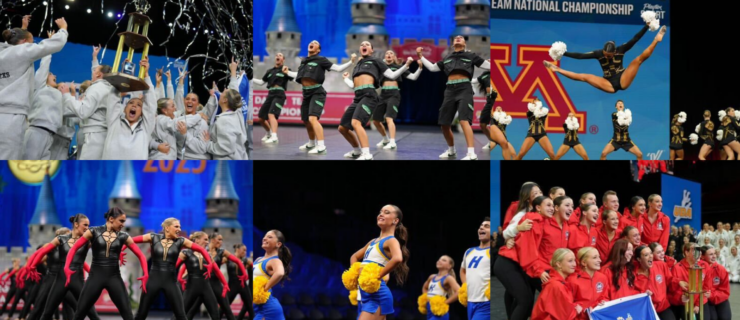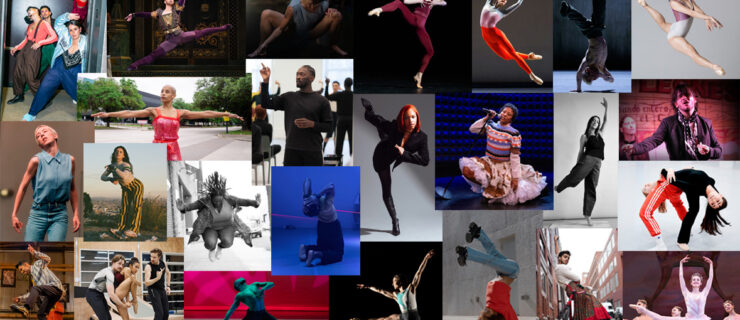Behind the Scenes of David LaChapelle's Documentary "Rize"
Bunheads, hoofers and jazz junkies alike find deep fulfillment in their crafts, but for the krumpers and clowns of L.A.’s South Central, dance is survival. As chronicled in the documentary Rize, this underground phenomenon has become a way of life.
Though krumping and clowning aren’t household terms like hip hop, they will be. Often referred to as ghetto ballet by those on the inside, they combine hip hop with athletic, almost tribal movements performed at lightning speed. As homage to the frenetic pace, Rize begins with a disclaimer explaining that no footage was sped up.
After the success of the film’s June release, krump enthusiasts bask in the glow of an international spotlight, but as dancer Christopher “Lil’ C” Toler emphatically states in the film, “This is not a trend.”
The Rise of Clowning and Krumping
In the wake of the Rodney King riots in the early 1990s, South Central resident Tommy Johnson longed for a way to unify and restore his neighborhood amidst the gang infestation and violence that plagued it. A friend’s last-minute request for entertainment at her child’s birthday party was the surprising catalyst for such an opportunity.
Tommy’s impromptu act resulted in repeat business from other families who’d heard the buzz about his “dancing ghetto clown” act. It wasn’t long before Tommy formed a troupe of hip-hop clowns to meet the demand from party-throwing families. The style of dance performed by the clowns was dubbed “stripper dance,”albeit watered down for kid appeal, for its rump-shaking, high-energy vibe.
As the clowning movement spread through South Central, a subsection of dancers began taking it a step further by “getting krumped,” or “krumping,” in backyards and clubs. Led by dancers Lil’ C and Ceasare “Tight Eyez” Willis, this faction split off to pursue the more raw style, which wasn’t so suited for children’s birthday parties.
“The krump style we created combined clowning with hard-hitting music and more rugged movements,” says Lil’ C. “Clowning is visually entertaining, happy and colorful, while krumping is the aggressive flip side with an in-your-face style.”
Lil’ C says his departure from the clowns was met “with Tommy’s blessing. [Krumping and clowning] are like two forces joining together to fight oppression by society.” Lil’ C also gives props to Tommy for teaching him confidence and how to entertain crowds.
The attempt to define clowning and krumping is deemed by some to be futile. The dances combine elements of breakdancing, hip hop, jazz, African dance and the booty-shaking often seen in music videos. Scores of clown groups and rival krumping crews have arisen in response to the popularity of the styles, resulting in a network of dancers who feed off each other’s energy and compete for neighborhood superiority.
Life Choice
Those who clown and krump derive joy through dance, but most haven’t had much of a reason to smile throughout their young lives. Tight Eyez was raised by a drug-addicted mother and was inadvertently shot while trying to protect her from a relative.
While absentee parents, drugs and violence have been a startling part of the norm for many growing up in “the hood,” these dancers have found a way to channel rage at their circumstances into the raw movements seen in Rize. In the absence of funding for after-school and performing arts programs, joining a clown group or getting krumped is a positive alternative to more dangerous activities.
Now that krumping and clowning have gained notoriety in the neighborhoods of inner-city L.A., many dancers have come to see krumping and clowning as an overt way of shunning gang involvement, because the motive for joining a gang or a clown group is similar—to belong. In Rize, interviews with the dancers’ family members reveal gratitude that their sons and daughters chose to get krumped rather than join a gang.
“[In the hood], you’re asked either what set you’re from, meaning ‘Are you with the Crips or the Bloods?’, or you’re asked, ‘Who do you dance for?’ That’s your choice; you’re either a clown or you’re in a gang,” says David LaChapelle, director of Rize.
The Power of Krump
As a respite from negative distractions, krumping and its spiritual elements have clearly been calming influences for those who partake. Deep emotion is apparent in any krump session, but some dancers elevate their participation to a form of worship, as evidenced by Dragon and krumper Marquisa “Miss Prissy” Gardner in Rize, when they’re shown dancing in church.
Miss Prissy offers proof of krumping as religious experience by referencing Daisy, a dancer also profiled in the film. One scene shows Daisy “wilding out,” that is, blacking out, overcome by emotion, in the middle of a krump circle. “When you catch the Holy Spirit, it’s an indescribable feeling that enters your soul,” says Miss Prissy. “When the spirit is ready to exit, it leaves a mark on you and that’s what you saw in the film. The Holy Spirit entered [Daisy] in a dance form and used her as a vessel.”
With movements reminiscent of tribal African dances, krumping also carries an inherent symbolism of triumph, right down to the clowns’ tribal-style face paint. Essentially born of race riots, the dance form represents the ability to transcend racial tension and violence. “I view krumping as the liberation of a people,” says Dragon, who aspires to be a minister. “It’s the rise of a people who’ve been held back for so long.”
Behind
Rize
Before the making of Rize, Tommy, Lil’ C and their cohorts had been approached numerous times about documenting the unique dance phenomenon. However, it wasn’t until Rize director and celebrity photographer David LaChapelle took notice of Johnson’s crew that the dancers were receptive to being filmed.
“We wanted to guard the integrity of what we have, because it’s been in the hood for so long,” says Lil’ C. “When you take something mainstream, you risk it being exploited. But all [David] wanted to do was share this with the world.”
LaChapelle first encountered the krumpers and clowns on the set of a Christina Aguilera video he was directing in South Central, and was inspired to document and eventually to self-finance $700,000 of the film’s cost. To ensure authenticity, he assembled a diverse production crew that included sibling choreography team Rich and Tone Talauega and rapper Anwar “Flii” Burton.
Over several years, LaChapelle followed the movement, filming at every turn. From the heartbreak of a local girl’s gang-related death (the movie is dedicated to her) to the elation of clown birthday parties to the intensity of underground krump circles, LaChapelle captured the dance’s effect on the community.
One of the film’s most dramatic scenes is footage from Battle Zone V, a dance showdown between the krumpers and the clowns staged by Johnson and held at L.A.’s Great Western Forum. Fiercly competitive dance battles were waged that inspired mass hysteria from the thousands of spectators.
LaChappelle screened a short film, Krumped, at the 2004 Aspen Shorts Fest to overwhelmingly positive reaction. He used the momentum to garner support and further funding for a longer version, which became Rize. After a successful run at the Sundance Film Festival in the winter of 2005, the movie became a critical darling and induced an industry fascination.
When asked why he thinks the film touched a nerve with the public, LaChapelle offers his theory: “I believe that when you see this film, you’re being introduced to heroes. These are people who not only dance heroically, but also live their lives in a heroic way. They’re making choices that are not the obvious choices.”
Despite any initial resistance the dancers may have had to going mainstream, all of the dancers profiled in the film say that they couldn’t be happier with the final product. “David learned a lot from us, but we learned even more from David,” says Lil’ C. “He showed all of us that we are already stars, because we didn’t succumb to the violence of the neighborhood. He told us, ‘You chose to create rather than destroy. That is what makes you a star.’”
Dragon was also pleased with the way krumping was portrayed: “The dance style we do is looked at as dark and aggressive, but you can see beauty in it. Our dance is a collage of pictures, and David did a beautiful job putting a frame around it.”
The Future of Krumping
Despite the fame and media attention that accompanied Rize, the krumpers and the clowns say they have no intention of going the bling-bling hip-hop route. Staying true to the ideals behind the dance is important to them, who for the most part all say they still reside in “the hood.”
“When we first started this movement, we would go to auditions and clubs and get looked at like black sheep,” says Miss Prissy, who now goes by Phoenix. “It was so spiritual and raw that Hollywood couldn’t accept it. Now that the movie has come out, people are jumping on the bandwagon.”
The bandwagon has included opportunities to tour with rapper The Game, for Lil’ C and Miss Prissy. Because the krumpers take particular pride in the freestyle element of their dance, Lil’ C, who has worked with R&B superstars Ciara, Missy Elliott and Christina Milian, says that putting the movements to counts presented a challenge. “I spent hours in the studio videotaping my freestyle and matching the movements to counts,” he explains.
If the Hollywood spotlight one day dims, krumping will likely persist. For the dancers, it was never about gaining recognition. It was about shining on in the darkest of circumstances. “People wonder if we’ve moved to mansions, but we don’t look at our struggle as something to be ashamed about,” says Lil’ C. “Our struggle is what makes us special.”



